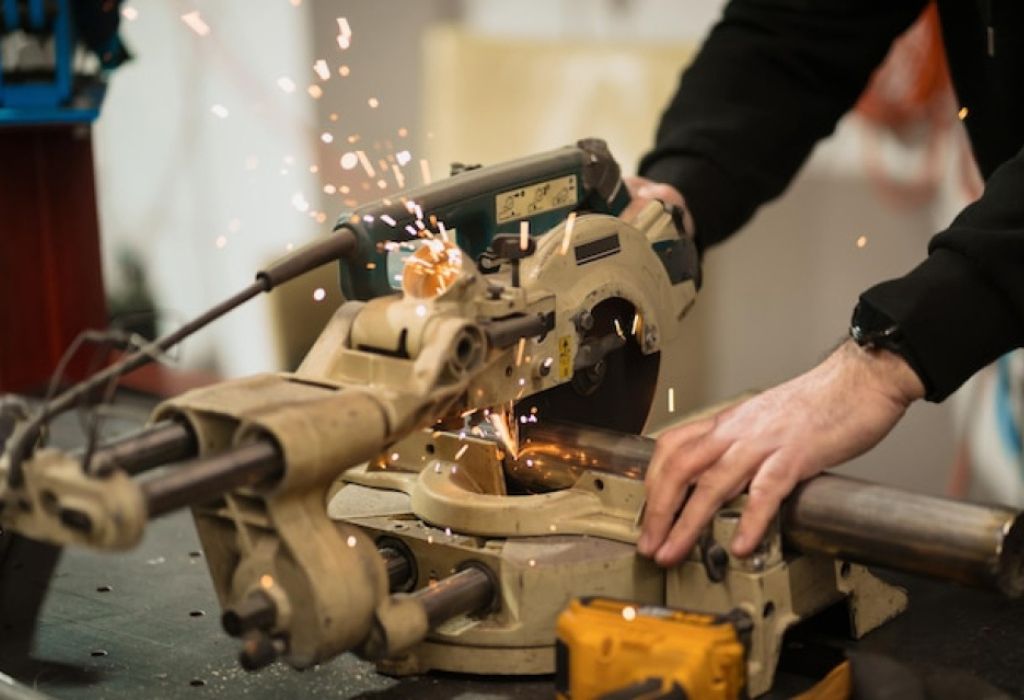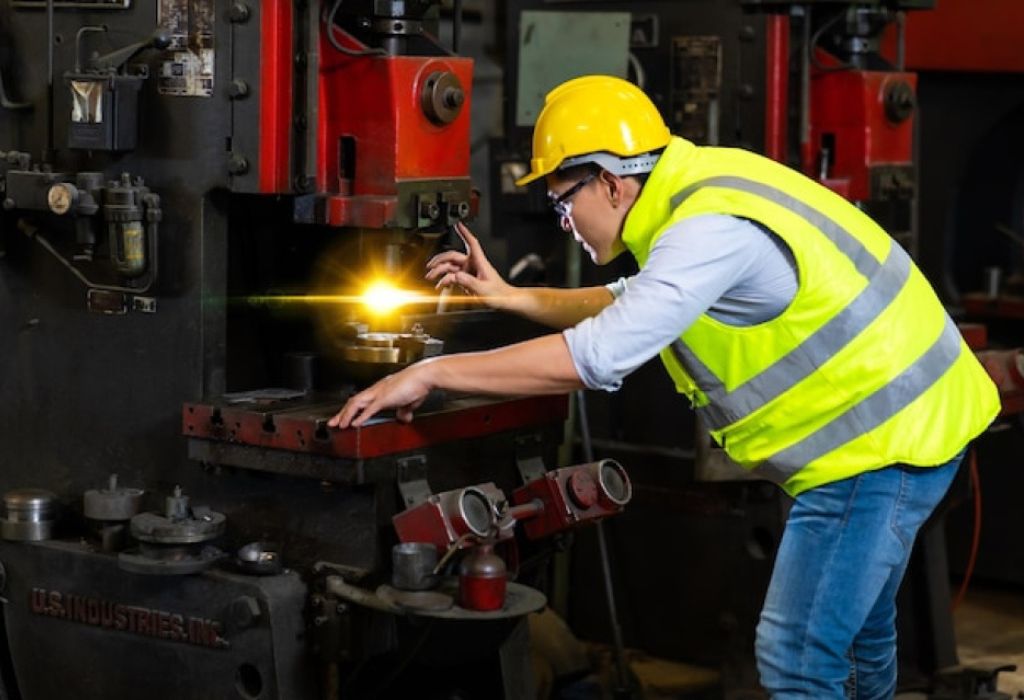Every welder knows the frustration of a machine overheating mid-job. You set up your MIG, TIG, or stick welder, start the bead, and suddenly the machine cuts off — leaving your weld incomplete and your workflow interrupted.
This happens because most welding machines have a duty cycle, which limits how long the welder can run at a specific amperage before needing a cooling period. Ignoring this can reduce the lifespan of your machine and compromise weld quality.
Understanding how to calculate duty cycle of welding machine is crucial for both hobbyists and professionals. A proper calculation ensures safe operation, prevents damage, and allows you to plan welding intervals efficiently. According to WeldingPros.com, exceeding a 60% duty cycle can significantly shorten a machine’s lifespan, especially for high-amperage welding applications (weldingpros.com).
Many welders struggle to translate the duty cycle percentage into practical on-time and off-time for different welding processes. For instance, MIG welding at 200A may have a different duty cycle than TIG welding at the same amperage, requiring careful monitoring to avoid overheating.
This guide explains step by step how to calculate duty cycle, including the formula, practical examples, factors that affect it, and tips for maximizing your machine’s runtime. By the end, you’ll know how to protect your equipment, maintain weld quality, and work efficiently without interruptions.
What Is Duty Cycle in Welding Machines

Duty cycle refers to the percentage of time a welding machine can operate at a given current within a specific period, typically 10 minutes. Understanding it helps prevent machine overheating and ensures consistent weld quality.
Importance of Duty Cycle
- Prevents overheating and internal component damage
- Ensures optimal welding efficiency and consistent bead quality
- Helps select the right welding machine for a specific application
What does duty cycle mean?
The percentage of time a machine can weld safely within a 10-minute period.
Why is it important?
Prevents damage to the machine and ensures longer operational life.
Does it vary by welding type?
Yes, MIG, TIG, and stick welders each have different duty cycles.
How does amperage affect it?
Higher currents reduce the duty cycle percentage due to increased heat generation.
Can duty cycle impact weld quality?
Yes, overheating can cause inconsistent penetration, bead defects, and poor fusion.
How Duty Cycle Is Calculated
Calculating duty cycle involves measuring welding “on-time” versus total time in a 10-minute cycle. This allows welders to plan work without exceeding safe operating limits.
Basic Duty Cycle Formula
- Duty Cycle (%) = (Welding Time ÷ Total Time) × 100
- Example: Welding for 6 minutes in 10 minutes → Duty Cycle = 60%
What is the standard measurement period?
Typically a 10-minute cycle.
How do I calculate on-time?
Measure the duration the machine is actively welding.
What counts as off-time?
Cooling periods when the machine is idle.
Does this formula change by welder type?
No, the calculation is the same; only rated duty cycles vary.
Can I use a duty cycle calculator online?
Yes, many manufacturers provide online tools for quick calculation.
Factors Affecting Duty Cycle
Several factors influence duty cycle, including amperage, welding process, and machine design. Being aware of these factors prevents overheating and ensures consistent weld quality.
Key Influencing Factors
- Amperage: higher currents generate more heat, shortening duty cycle
- Welding process: MIG, TIG, and stick machines differ in thermal output
- Ambient temperature: high heat reduces safe welding time
- Machine type: inverter welders typically allow longer duty cycles than transformer-based machines
- Manufacturer ratings: always check the rated duty cycle for your specific welder
Does welding hotter reduce duty cycle?
Yes, higher amperage generates more heat, reducing safe welding time.
Do ambient temperatures matter?
Yes, extreme temperatures reduce machine tolerance and operational time.
Which welding types have higher duty cycles?
MIG and inverter machines usually sustain longer duty cycles.
Can extended operation damage the welder?
Yes, exceeding the rated duty cycle risks overheating and component failure.
Do older machines have shorter duty cycles?
Often, due to aging components and reduced cooling efficiency.
Examples of Duty Cycle Calculations
Practical examples help welders understand how to apply duty cycle calculations in real-world scenarios.
Example Calculations
- MIG welding at 200A, 60% duty cycle: Max 6 minutes welding in 10 minutes
- TIG welding at 150A, 40% duty cycle: Max 4 minutes welding in 10 minutes
- Stick welding at 180A, 50% duty cycle: Max 5 minutes welding in 10 minutes
How do I calculate welding time for my current?
Refer to the machine’s rated duty cycle at the selected amperage.
Can I exceed duty cycle temporarily?
Only briefly; prolonged use increases risk of overheating.
Does electrode type affect duty cycle?
Yes, some electrodes generate more heat, reducing safe welding time.
Should I always wait for cooling time?
Yes, it prevents damage and ensures consistent welds.
Can water-cooled torches extend duty cycle?
Yes, they dissipate heat faster, allowing longer welds.
Tools to Measure and Monitor Duty Cycle
Modern welders often include built-in duty cycle indicators. External tools like timers and temperature sensors help monitor welding intervals accurately.
Monitoring Methods
- Built-in duty cycle meters on inverter machines
- External timers for on/off monitoring
- Infrared temperature sensors to track internal heat
- Duty cycle alarms or thermal cut-off features
Does every welder have a duty cycle indicator?
No, mainly modern inverter welders include this feature.
Can I measure manually?
Yes, track welding and cooling times using a stopwatch.
Do thermal alarms help?
Yes, they alert you when approaching the limit.
Is monitoring necessary for experienced welders?
Yes, even professionals must respect duty cycles to avoid damage.
Can sensors extend duty cycle safely?
They help prevent overheating, enabling optimal usage within rated limits.
Common Mistakes When Calculating Duty Cycle

Misjudging duty cycle can lead to overheating, equipment damage, and inconsistent weld quality. Awareness of these mistakes prevents downtime and repair costs.
Mistakes to Avoid
- Ignoring cooling periods
- Using incorrect amperage for calculation
- Overestimating machine capacity
- Neglecting ambient temperature
- Failing to consider machine aging effects
What happens if I ignore cooling time?
Overheating and possible component failure.
Does higher amperage reduce duty cycle?
Yes, higher current generates more heat.
Can incorrect calculation affect weld quality?
Yes, causing inconsistent penetration and bead defects.
Should ambient temperature be considered?
Absolutely, heat reduces machine tolerance.
Do older welders need adjusted duty cycles?
Yes, aging reduces safe operational time.
Tips to Maximize Welding Machine Duty Cycle
Following best practices extends machine life and improves welding efficiency.
Best Practices
- Operate within recommended amperage
- Schedule welding intervals to allow cooling
- Keep machines clean and well-ventilated
- Use water-cooled torches if available
- Monitor temperature and use thermal cut-offs
Can I increase duty cycle by lowering current?
Yes, lower amperage produces less heat.
Does intermittent welding help?
Yes, it allows cooling and prevents overheating.
Is ventilation important?
Proper airflow dissipates heat efficiently.
Do water-cooled systems improve duty cycle?
Yes, they allow longer welds without overheating.
Should I follow manufacturer guidelines?
Always, to maintain safe operation and warranty coverage.
Conclusion
Understanding how to calculate duty cycle of welding machine ensures safe operation, protects equipment, and improves weld quality. By measuring welding time, considering machine ratings, and factoring in current, ambient temperature, and cooling periods, welders can work efficiently without damaging the machine.
Following best practices, using proper monitoring tools, and applying practical examples ensures that your MIG, TIG, or stick welder runs effectively and lasts longer. Proper duty cycle management is key to consistent, high-quality welds and extended equipment life.

I’m Darrell Julian, the founder, lead writer, and hands-on welding enthusiast behind ArcWeldingPro.com. With more than 15 years of real-world welding experience, I created this platform to share what I’ve learned in the field, in the shop, and in the heat of the arc.


